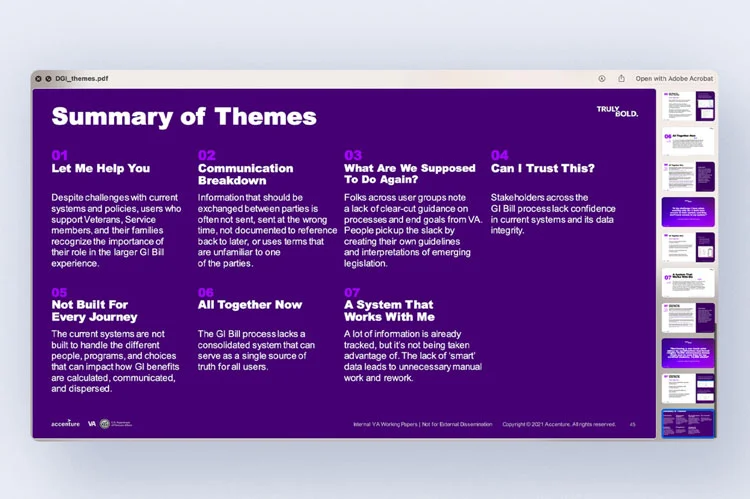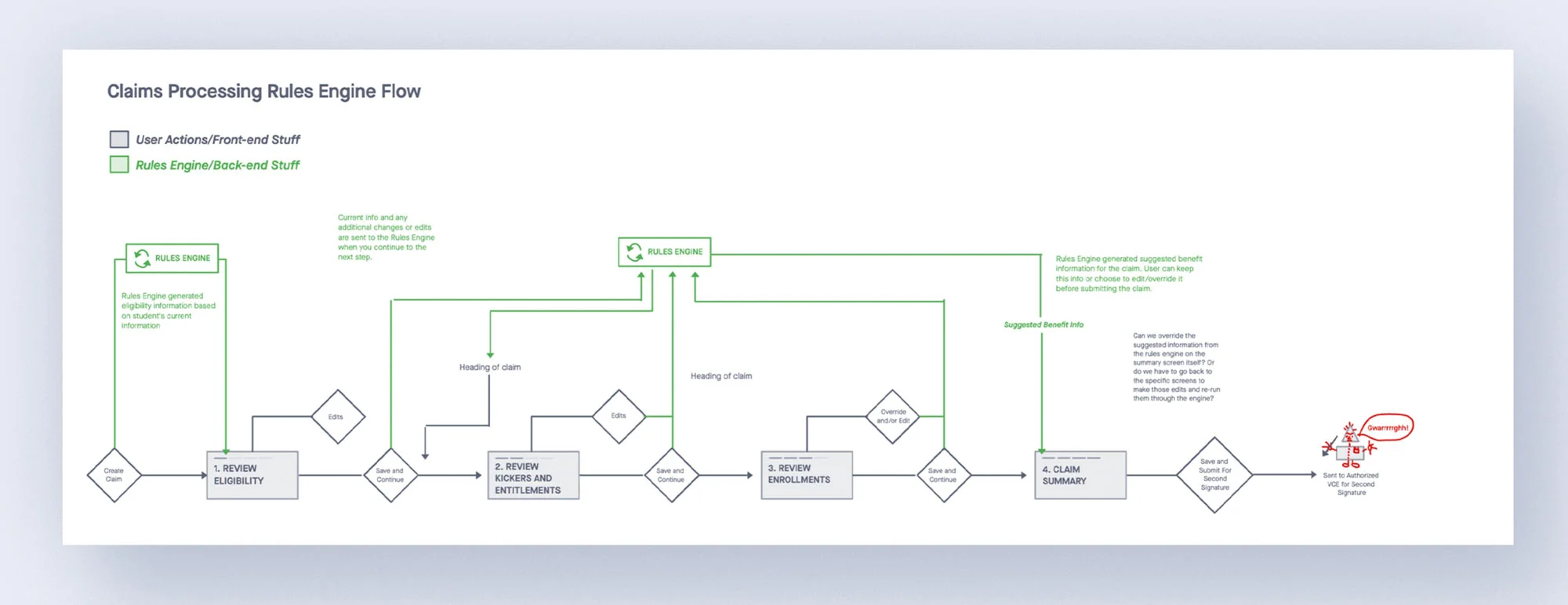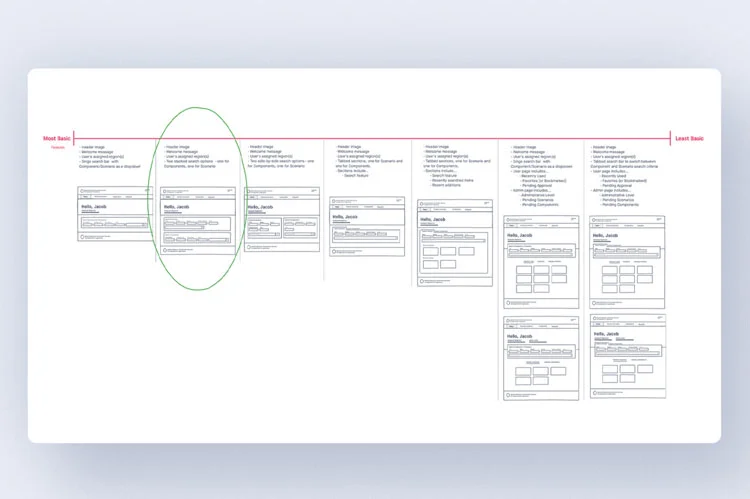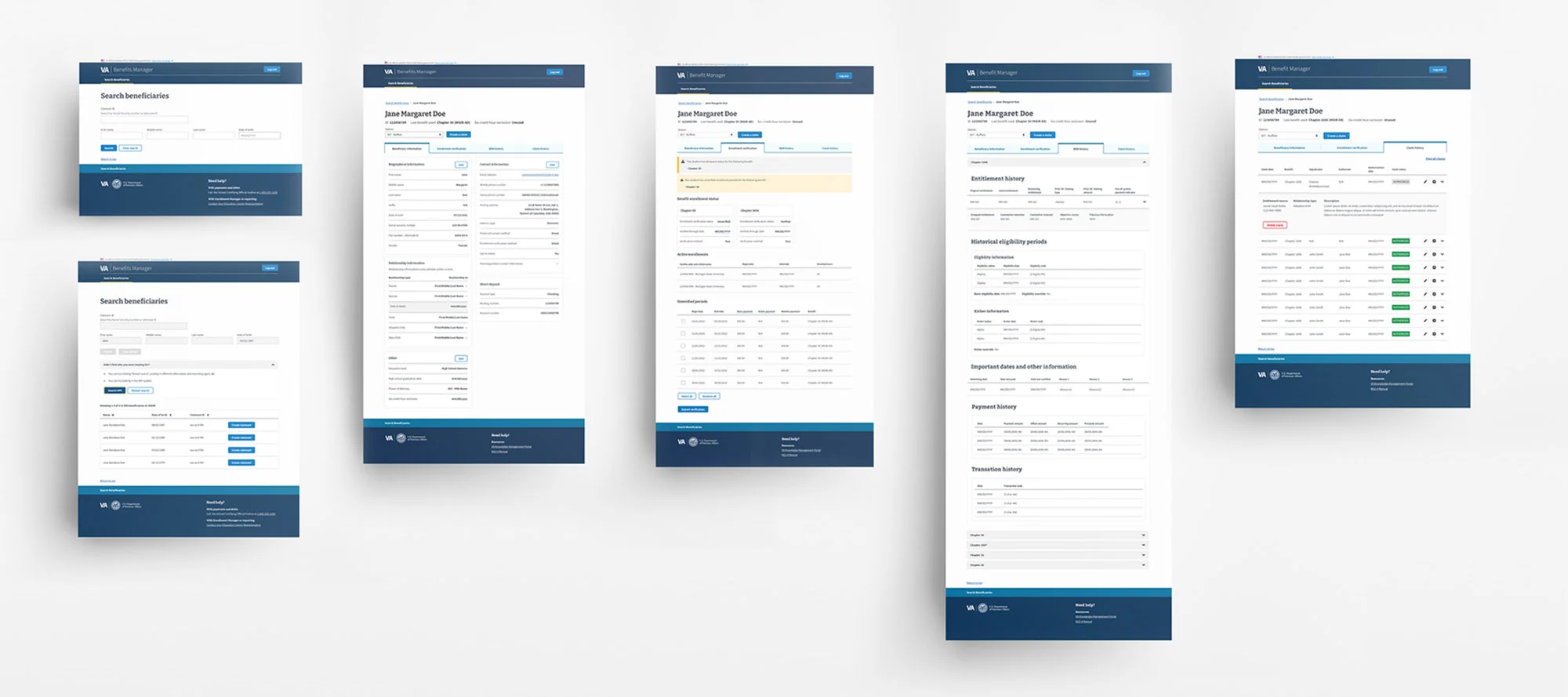For over 30 years, the VA relied on the same software, processes, and resources.
While these tools might have been state-of-the-art during the era of portable CD players and early cell phones, they're painfully antiquated for the needs of today’s veterans.
This project was massive undertaking. This portfolio piece is focused on the most complex and impactful piece: the Benefit Manager.
The Problem: Old software, isolated datasets, and an outdated UI has made the process of applying, reviewing, and releasing GI Bill education funds long, taxing, and inadequate for both veterans and VA employees.
The Opportunity: With a $500 million contract and a young, talented team of designers, analysts, developers, we leveraged human-centered design to consolidate steps, identify opportunities for automation, and make the process of going back to school as easy as possible for our veterans and their families.
The Solution:We built single, intuitive application that simplifies steps, automates decisions, and modernizes how the VA evaluates, approves, and releases educational benefits.

To fully understand the GI BIll process, we talked with dozens of VA employees, veterans, and education personnel. What we got was a wealth of qualitative information that we then analyzed, turned into themes, and translated into design principles that guided our decisions throughout the project.


Once we identified the issues, it was time to map out the steps, responsibilities, and systems used when reviewing GI Bill request. Using whiteboards, sticky notes, and simple sketches, we visualized the current workflow, uncovering gaps and spotting opportunities where automation could save both time and money.
clearly communicate current and future states to our client and served as a blueprint for designing the new Benefit Manager application.



After identifying the issues with the current process and ways to improve it, we got to work designing both low-fidelity and high fidelity wires using the USWDS design system.
With a working prototype, we presented it to the client for feedback and secured sign-off. From there, we collaborated closely with the development team, ensuring our designs were translated into working code.


As components of the new Benefit Manager we developed we would plan, organize, and facilitate user testing session. In these sessions, users completed real-world scenarios using the application, while we recorded metrics such as success rates, fail rate, confidence levels, etc.
After these sessions, we would review the feedback, identified potential improvements, and plot them on a impact vs effort matrix. This helped us prioritize the changes that would make the best final product.

